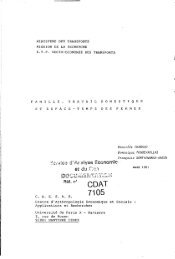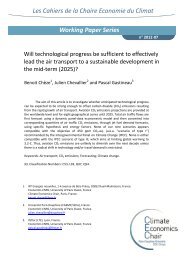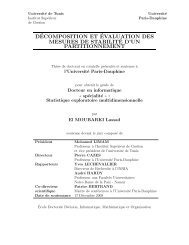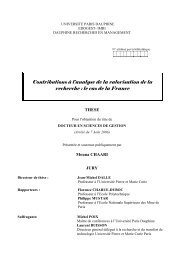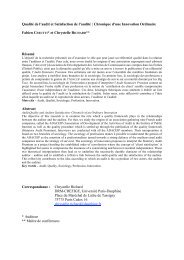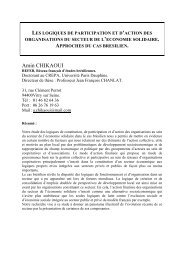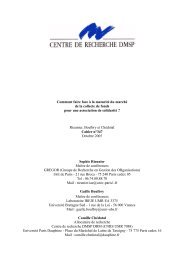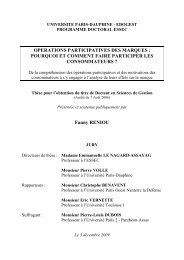Delphine LAUTIER and Alain GALLI Delphine LAUTIER(*) is ...
Delphine LAUTIER and Alain GALLI Delphine LAUTIER(*) is ...
Delphine LAUTIER and Alain GALLI Delphine LAUTIER(*) is ...
Create successful ePaper yourself
Turn your PDF publications into a flip-book with our unique Google optimized e-Paper software.
The remainder of the paper <strong>is</strong> organized as follows. Section II presents the term<br />
structure models of commodity prices <strong>and</strong> explains why their use necessitates resorting to<br />
the Kalman filters. Section III explains how to apply the simple <strong>and</strong> the extended Kalman<br />
filters to a well-known model developed by Schwartz in 1997. Relying on the model<br />
performances, section IV compares the two filters <strong>and</strong> d<strong>is</strong>cusses some practical<br />
implementation problems. Section V concludes.<br />
II. THE TERM STRUCTURE MODELS OF COMMODITY PRICES<br />
In th<strong>is</strong> section, after describing some general features characterizing the term<br />
structure models of commodity prices, we present the model used for the compar<strong>is</strong>on<br />
between the simple <strong>and</strong> the extended Kalman filters: Schwartz’s model.<br />
General presentation<br />
The term structure of commodity futures prices describes the relationships<br />
between the spot price <strong>and</strong> futures prices for different delivery dates. So it synthesizes all<br />
the information available in the market. Several term structure models have been<br />
proposed in the literature. Their objective <strong>is</strong> firstly to reproduce the observed futures<br />
prices as accurately as possible, <strong>and</strong> secondly to extend the curve for very long maturities,<br />
even for delivery dates which are not available in the market.<br />
Term structure models borrow from the contingent claim analys<strong>is</strong> developed in a<br />
partial equilibrium framework for options <strong>and</strong> interest rates models. Relying on arbitrage<br />
reasoning, the development of a term structure model of commodity prices follows three<br />
successive steps: identification of the state variables, specification of their dynamics <strong>and</strong><br />
extraction of the futures prices values from a differential valuation equation.<br />
When only one state variable <strong>is</strong> used to explain the futures prices behaviour, as <strong>is</strong><br />
the case, for example, in Brennan <strong>and</strong> Schwartz’s model (1985), th<strong>is</strong> single factor <strong>is</strong> the<br />
spot price. Recognizing the limits of such a formulation, several models based upon two<br />
4



